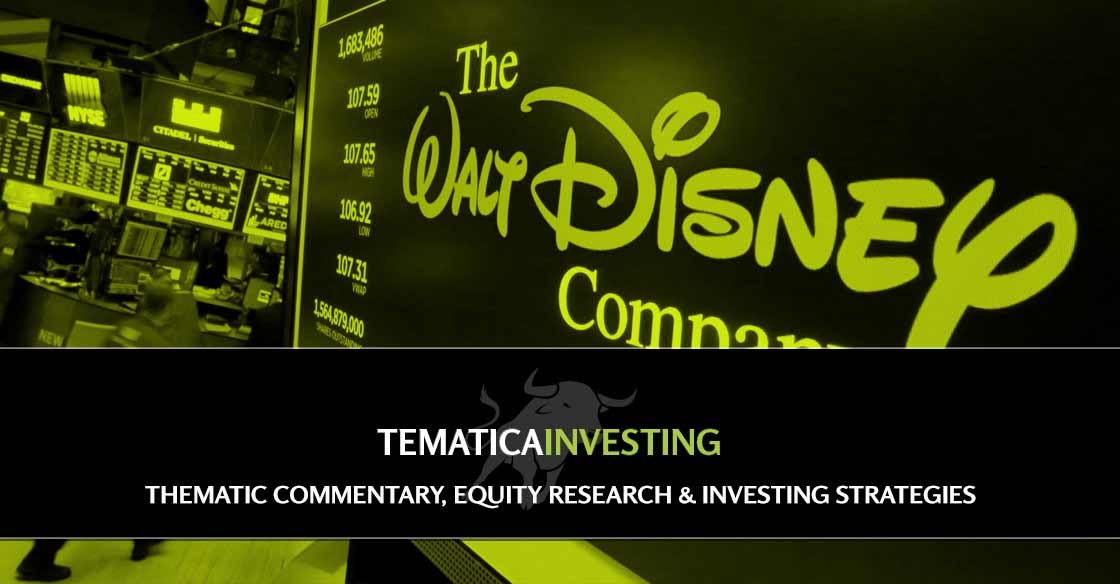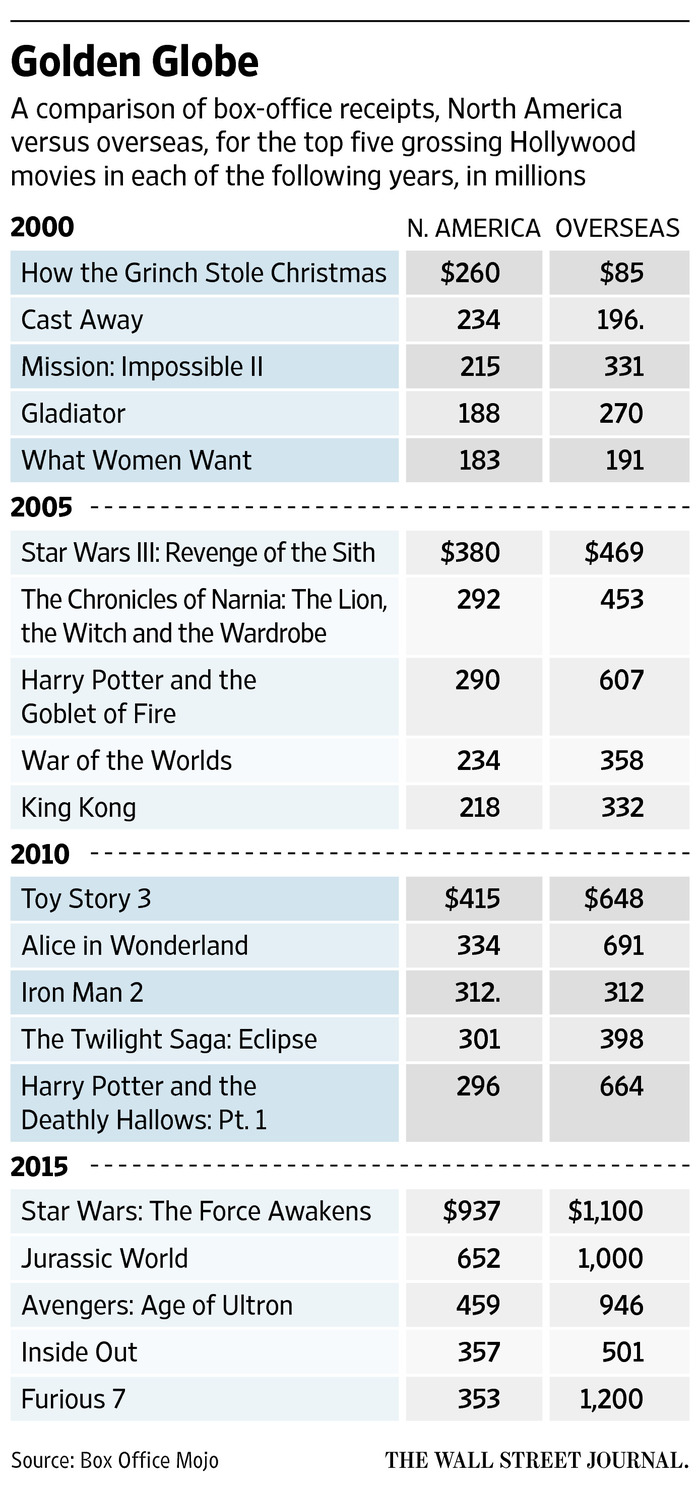After taking the prior week off on my sojourn to Singapore to present at INVESTFair 2017, I’m back. Take it from me, not only was the food fantastic as I put on several extra pounds, but Singapore is far ahead of us when it comes to our Cashless Consumption investing theme. Tematica’s Chief Macro Strategist, Lenore Hawkins, and I talked about this on our Cocktail Investing podcast recently, but that level of activity keeps us bullish on USA Technology (USAT) shares on the Tematica Select List.
Earlier this week, we posted comments on Content is King player Disney (DIS)’s recent announcement it will look to shun Netflix (NFLX) and enter the streaming content market gun, rather than remaining a content bullet, and scaled further into shares of Food with Integrity company Amplify Snacks (BETR). We also sent over out latest high-level thoughts on the market in this week’s Monday Morning Kickoff – if you missed it, you can read it here.
As a quick recap since our last Tematica Investing, we’ve seen a far more cautious attitude enter the market following the back and forth with the U.S. and North Korea. At the same time, we’re also seeing some fatigue as even solid earnings beats like the one yesterday from Home Depot (HD) are not having the usual or expected stock price reaction. While we could toss it up to the fact that we’re entering the back half of August — one of the traditionally slower times of the year as people sneak it that last round of summer vacation — there could be something else going on.
Our view here at Tematica is investors are taking stock of not only the vector and velocity of the domestic economy, but also the growing political unease and are looking ahead to what’s coming down the barrel in September: the unveiling of President Trump’s tax reform, Congress dealing with the debt ceiling and potentially the start of the Fed’s balance sheet unwinding. All that during what has historically been one of the worst months for the domestic stock market. We’d add in that September is full of investor conferences, and after the usual August quiet, we suspect investors will be listening closely to these upcoming company presentations to fine tune back-half of the year expectations.
So, while we’ve seen a bit of a rebound in the market so far this week following last week’s sell off, we’re inclined to see the near-term waters remaining a tad choppy. Let’s remember, trading volumes tend to be a tad light this time of year and that can exacerbate the swings in stock prices. The net result is that we will tread carefully in the coming weeks, but we will still be opportunistic like we were with the buying of additional Amplify Snacks (BETR) shares yesterday, a move that reduced the overall cost basis on the Tematica Select List.
Checking in on July Retail Sales – Looks Great for Amazon, Alphabet, UPS and Costco
As mentioned in this week’s Monday Morning Kickoff, there is a modest amount of economic data to be had this week, including yesterday’s July Retail Sales Report. Overall it was a positive report with core retail sales, which exclude auto, gasoline station, building materials, and food services and drinking places sales, up 0.5 percent. Moreover, the June decline of 0.1 percent was revised to an uptick of 0.1 percent. Digging into the July report, we found a pick-up in digital commerce, which likely reflects the Back to School shopping season as well as ongoing efforts by Amazon (AMZN) and others to grab consumer wallet share. Let’s remember that Amazon’s own would-be shopping holiday – Prime Day – fell in early July and likely was partly responsible for the strong rebound in digital shopping during the month.
Year over year, Nonstore retailers (Commerce Dept. speak for digital commerce sales) rose 11.5 percent in July, once again making the category the strongest performer. We see this as boding well for not only our Amazon shares but also for United Parcel Service (UPS) — those packages have to get to your front door somehow — as well as Alphabet (GOOGL) given its Google Shopping service as well as the company’s Search business.
Getting back to the July Retail Sales Report, most other categories were positive for the month, save for Sporting Goods, Electronics & Appliances and Department Stores. The month’s data helps put some understanding around Dick’s Sporting Goods (DKS) slashing its 2017 outlook, but we also think that company is poised to hit the headwind aspect of our Connected Society investing theme following Nike’s (NKE) recent linkage with Amazon. Said another way, we continue to see a bleak outlook for traditional brick & mortar retailers as consumer products and apparel companies, especially branded ones, embrace Amazon and other digital logistic businesses.
Finally, the July Retail Sales Report put some much-needed context around Costco Wholesale’s (COST) July sales report. As a reminder, Costco reported its July sales increased 6.0 percent in the US, and 6.2 percent across the entire geographic footprint. That compares to just a 2 percent increase for General Merchandise stores as well as Grocery vs. July 2016. Additionally, Costco continued to open up new warehouse locations during the month, reaching 736 locations compared to 729 at the end of April. Paired with the recent membership fee increase, this expanding footprint should be a positive impact for the all-important and high margin member fee revenue stream.
• Our price target on Amazon (AMZN) shares remains $1,150.
• Our price target on Alphabet (GOOGL) shares remains $1,050.
• Our price target on United Parcel Service (UPS) shares remains $122.
• Our price target on Costco Wholesale (COST) remains $190.
On Deck – Earnings from Applied Materials
Even though we are in the dog days of summer, we still have a few companies left to report their quarterly results. One of them is Applied Materials (AMAT), and that event happens later this week. Following a bullish report from competitor Lam Research (LRCX), we expect solid results to be had. Despite the move lower over the last several weeks, the outlook for semiconductor capital equipment remains bright given the expanding reach of chips into a variety of end markets as well as demand for next-generation memory and display solutions.
This includes the same currently capacity-constrained organic light emitting diode display market, which is seeing rising demand dynamics from the smartphone, TV, wearables and automotive industries. And yes, this same demand function that is benefitting the shares of Universal Display (OLED) on the Tematica Select List. On Applied’s earnings call we’ll be listening for equipment order as well as overall demand tone for this disruptive display technology to determine as best we can how many quarters
One final demand driver that should result in a positive quarter for AMAT — ramping capacity in China. The potential wrinkle with this is we’ll need to be mindful of exchange rates and the impact on the company’s business, but all in all, we suspect the company will deliver a solid quarter with an upbeat outlook.
On a side note, odds are Applied will discuss factors that are driving chip demand and therefore incremental demand for its semiconductor capital equipment. Likely subjects include data centers, the Internet of Things, the Connected Car and other markets. The one we’ll be listening to given the Tematica Select List position in AXT Inc. (AXTI) and Dycom (DY) will be the smartphone market — which is entering its seasonally strong part of the year — and any commentary on 5G network deployments. Other 5G commentary points to a pick-up in testing by Verizon Communications (VZ) and AT&T (T) as well as Apple being granted a license to test 5G wireless services. Both of these developments reinforce our bullish view on both AXT and DY shares on the Tematica Select List.
• Our price target on Applied Materials (AMAT) remains $55.
• Our price target on AXT Inc. (AMAT) remains $11.
• Our price target on Dycom Industries (DY) remains $115.
Housekeeping Items
There are no housekeeping items this week, other than to remind you to check TematicaResearch.com as we post more thematic and macro commentary in the coming days. And while the Cocktail Investing podcast is on hiatus until the last week of August, feel free to revisit some of the past episodes here.





